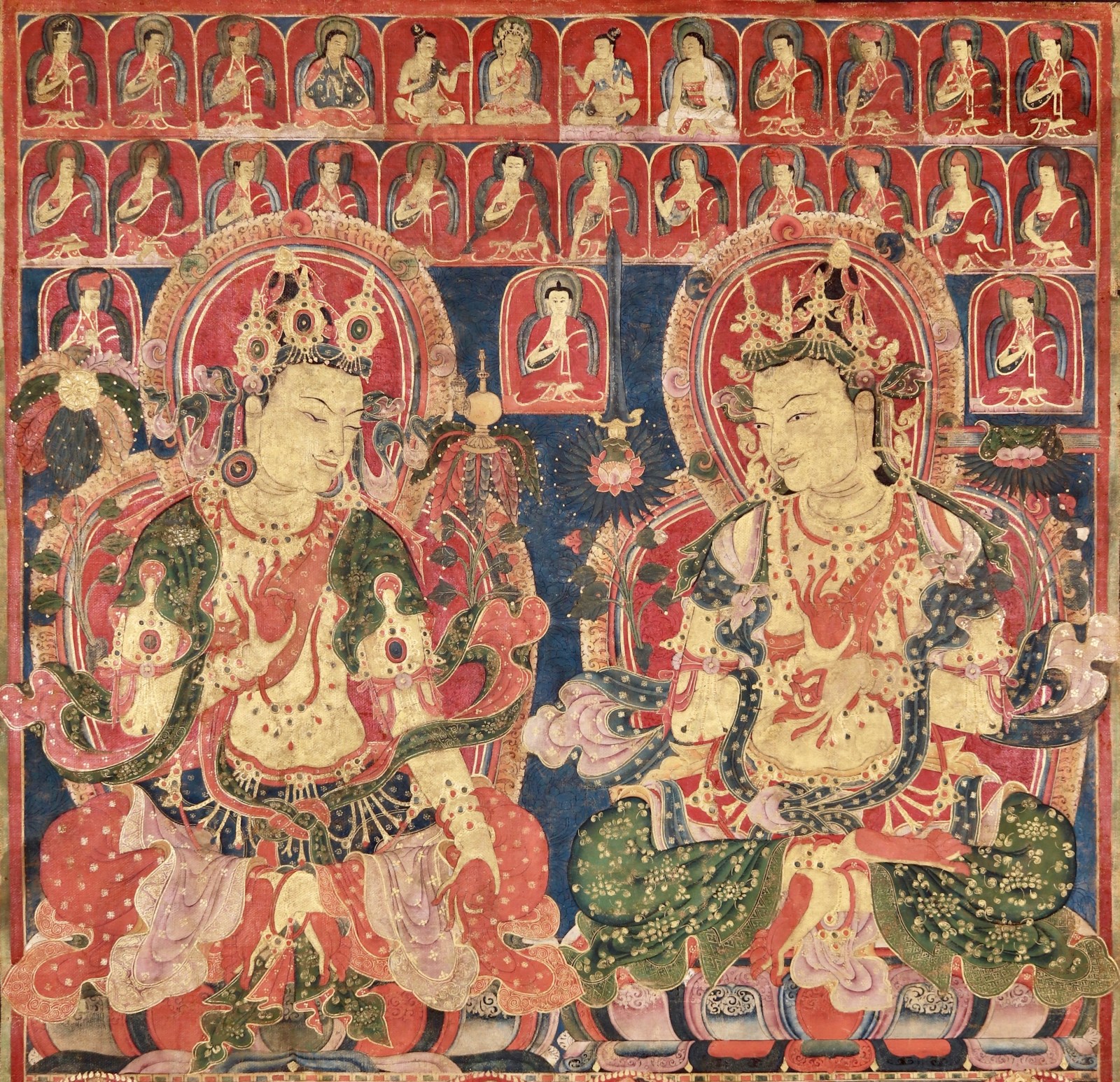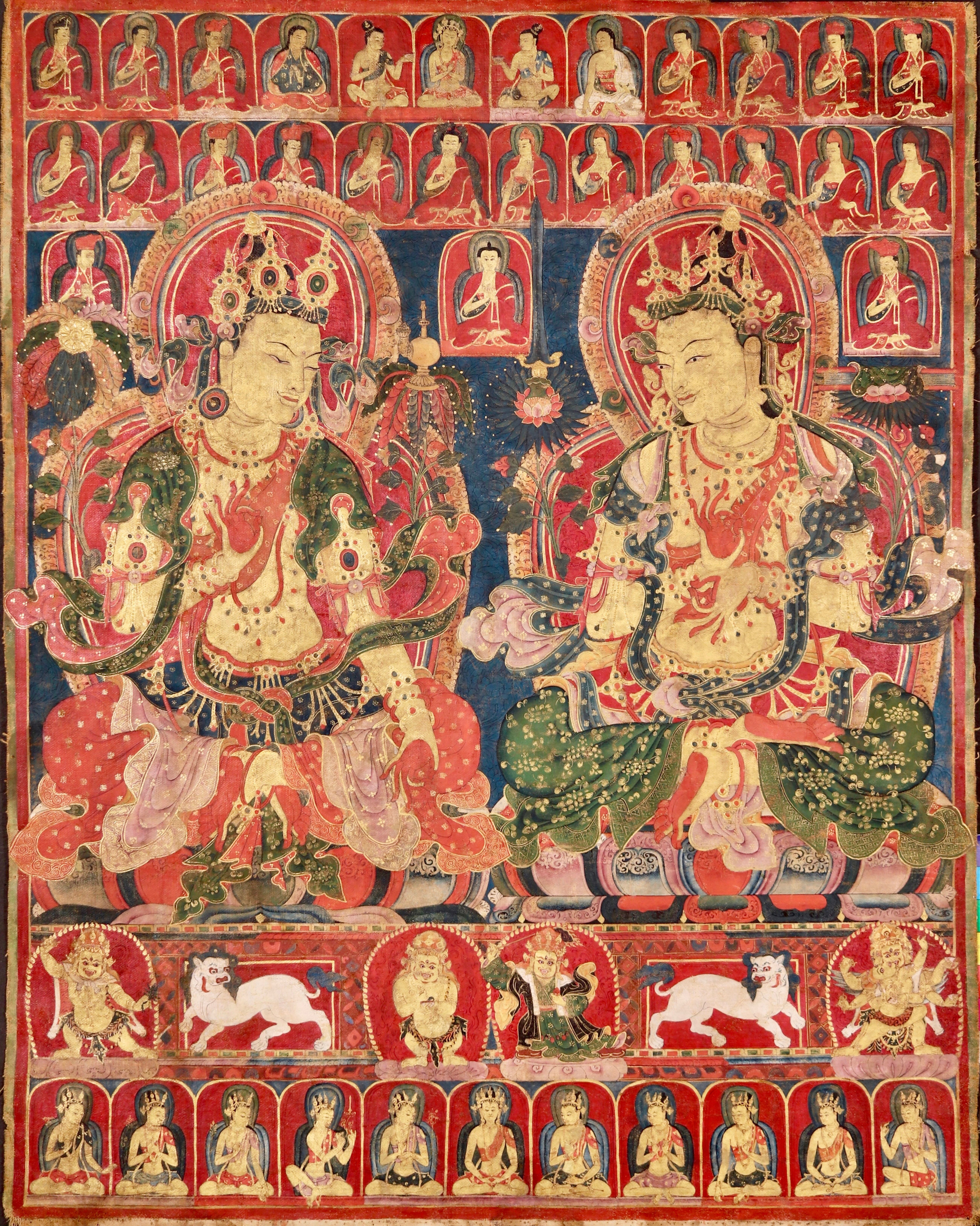
Provenance:
European Private Collection, acquired in 1994
This fine and rare fourteenth or early fifteenth-century thangka upholds the Tibetan tradition established by Atisha of depicting Maitreya and Manjushri in discourse. The Indian master Atisha (c. 982-1054), while teaching in Tibet, sent a message to his monastery at Vikramashila to create a painting of his vision of Maitreya and Manjushri. Atisha described a vision of Maitreya, the Buddha of the Future, and Manjushri, the bodhisattva of wisdom, debating in Tibet, which became a central theme in Tibetan Buddhist art, particularly thangkas.
This iconography depicts Manjushri, representing profound view, and Maitreya, representing profound action, in a learned discussion, establishing a tradition of them as teacher and student, with Manjushri as the elder, despite the ancient convention that Manjushri was Maitreya's teacher.
Maitreya is seated at the left, with flowers at the shoulder supporting a golden wheel of the law (chakra) and a water vessel (kalasha) and his hands in the gesture of learned discussion (vitarka mudra). Manjushri is on the right, with a sword (khadga) and sacred text (pustaka) and his hands in the teaching gesture of turning the wheel of the law (dharmachakra mudra). The bodhisattvas are richly adorned with golden jewelry and sumptuous textiles, each with aureole and halo and seated at ease in regal posture (lalitasana) on lotus pedestals supported by a lion throne (simhasana). The lions flank protector deities Panjarnata and Bhagavat Mahakala, with Guru Dragpo to the left and Mahottara Heruka to the right. A register of seated deities is beneath, and Sakyamuni Buddha is depicted between the halos of the principal bodhisattvas. A Kagyu lineage is above, with a black-hatted Gyalwa Karmapa at the upper left.
The work is distinguished by the vibrant palette and the lavish and well-preserved raised droplets of gold to indicate jewelry.

